High-Protein Vegan Meals: Introduction
Table of Contents
In the last few years, there has been a major change in food habits for optimal health. Amidst the changing lifestyle and increasing health awareness due to being overly busy, people are now paying more attention to their eating habits than ever before. Now people are choosing food not only based on taste or traditions, but also based on health, environment, and ethics. It is this ideology that has made vegan meals extremely popular. Previously known as a limited option, vegan meals have now become a global trend, with high-protein vegan meals.
Meaning and Definition of Vegan Meals-

Vegan meals mean food that is completely plant-based. Such as cereals, pulses, vegetables, seeds, fruits, nuts, and other plant-based foods. On the contrary, it does not include any kind of animal or animal products. Such as milk, curd, ghee, butter, cheese, egg, meat, fish, or honey.
“Vegan meals are a balanced and nutritious diet that uses only plant-based foods and prohibits any kind of animal products.”
The Growing Trend of Vegan Meals-
According to studies and research conducted in recent years, the number of people adopting vegan meals has increased exponentially. Social media and health experts have also played a significant role in spreading awareness about vegan meals. Nowadays, vegan meals have become not just a dietary habit but also a healthy lifestyle across the world. People from all walks of life, from young to old, are expressing their interest in avoiding animal-based foods and prioritizing plant-based vegan meals, not only for better health but also from an environmental and ethical perspective. This tradition has been prevalent in India for a long time. Consequently, vegan meals have become not only an easy lifestyle for people but also a sustainable option.
Apart from this, vegan meals are also considered very beneficial from the point of view of health. According to a variety of research, it can reduce the risk of problems such as heart diseases, obesity, and high blood pressure. Rich in a variety of fruits, vegetables, whole grains, and seeds, vegan meals are a good source of vitamins, minerals, and antioxidants. That is why people from all walks of life are adopting it.
Protein-
Protein is often called the building block of the body. The reason for this is that the muscles, skin, bones, hair, and, in addition, hormones and enzymes of our body are also made up of proteins. From daily activities to muscle rebuilding, strengthening immunity, and hormonal balance, protein plays a crucial role.
Protein Requirement-
For a person, according to their weight and physical activities, protein is needed. Normally, 0.80-1.00 grams of protein is required per kg of weight. For example, a person weighing 60 kg needs about 50–60 grams of protein per day. If there is an athlete or athlete, this need is further increased.
Common Misconceptions: Protein is found only in animals and animal products-
Nowadays, there is a perception in the minds of people that there is a lack of protein in a vegan diet. “Unless we eat eggs, meat, fish, milk, or cheese, the protein requirements cannot be met.” That’s the biggest misconception.
Indeed, protein is not the only nutrient found in animals and animal products. Even in plant-based foods, a sufficient amount of protein is found. Lentils, chickpeas, kidney beans, soybeans, quinoa, nuts, seeds, and grains are all important sources of protein. The only difference between all of them is that the vegan diet has to focus on variety and combination, so that all the necessary nutrients can be mixed together. For example, take a combination of lentils and rice. Protein is found in lentils, but lacks amino acids, while they are present in rice. When they are eaten together, the body gets all the necessary nutrients. The same principle applies to other vegan meals.
What is the reality of the myth?
Myth 1- Muscles cannot be built on a vegan diet.
Reality- Many of the world’s top athletes, sportspersons, and bodybuilders today are living examples of this, who, even while on a completely vegan diet, perform well in their tasks.
Myth 2: Without animal products, protein is deficient.
Reality: Soy, tofu, tempeh, lentils, and nuts easily provide enough protein.
Myth 3- Vegan protein is incomplete.
Fact: Not every plant-based diet indeed contains amino acids, but this deficiency can be completely overcome by eating a mix of different foods. For example, the combination of lentils and rice provides complete protein to the body. That is, by mixing different sources, the complete amino profile is obtained. Therefore, it is wrong to say that protein replenishment is not possible with a vegan diet.
Purpose of the Blog-
The main objective of this blog is to dispel the myth surrounding vegan meals and raise awareness of high-protein vegan meals. Along with this, there are high-protein options for breakfast, lunch, dinner, and snacks, a complete diet chart for a day, and information about common mistakes and how to avoid them.
Helpful Resources-
If you want a meal planner, then you can get many types of Planners with the help of the latest website, vijaybooks.store. Other blogs related to this are also available.
Other blogs are also available, similar to this blog.
High-Protein Vegan Meals: Need for Protein in the Body
Below are some of the easy and nutritious, high-protein options for the vegan meal.
1- Protein is required in the formation of muscles, immunity, hormones, energy, etc-
Protein plays an important role in building and repairing muscle mass in the body, strengthening the immune system, producing hormones and enzymes, and providing energy. Therefore, protein is called the ‘building block of the body’ because it is the basic component of every cell of ours. When there is not enough protein in the body, fatigue, muscle weakness, hair and skin problems, and an increased risk of infections can occur.
2- Protein requirement based on age, gender, weight, and physical activity-
The daily requirement of protein in the body depends on the person’s age, gender, weight, and physical activity. In general, a healthy adult needs about 0.8–1 g of protein per kilogram of weight. For example, if a person weighs 60 kg, then they will need 48–60 grams of protein per day. At the same time, athletes, bodybuilders, or more active people need up to 1.2–2 grams of protein per kg of weight.
High-Protein Vegan Meals: Sources of High Protein-
It is very important for all people who adopt a vegan diet to know which vegan meals are rich in protein. With the right choice and balance of vegan meals, the body’s need for protein can be met. For example-
1. Pulses and Beans–

Lentils and beans, for vegan meals, are an extremely reliable source of protein.
Pulses/Beans
Moong
Chickpeas
Lentils
Rajma
Cowpea
Protein Content
24g
19g
9g
8g
8g
Total Quantity (Cooked)
100g
100g
100g
100g
100g
2. Tofu and Tempeh

Both of these products made from soy are protein-rich alternatives to tofu and tempeh, vegan meals.
Tofu/tempeh
Tofu
Tempeh
Protein Content
8g
19g
Total Quantity (Cooked)
100g
100g
3. Quinoa, Oats, and Other Grains-

Quinoa is called a “superfood” because it contains all the essential amino acids.
Quinoa/Oats
Quinoa
Oats
Brown Rice
Protein Content
4g
13g
2.6g
Total Quantity (Cooked)
100g
100g
100g
4. Seeds and Nuts-

Nuts and seeds are rich not only in protein but also in healthy fats and fiber.
Nuts/Seeds
Chia Seeds
Flaxseeds
Almond
Peanuts
Protein Content
17g
18g
21g
25g
Total Quantity
100g
100g
100g
100g
5. Soy Products-

Soy protein is the most popular and effective source for vegan meals.
Soy Products
Soy Milk
Soy Chunks
Protein Content
3g
52g
Total Quantity (Cooked)
100ml
100g
By combining all these sources, if a vegan diet is made under high-protein vegan meals, then the body can easily get the necessary amino acids and enough protein. By taking care of variety and combinations, vegan meals can become just as nutritious and balanced.
High-Protein Vegan Meals: High-Protein for Breakfast-
Breakfast is the energy base for the whole day. This is considered to be the most important part of the day. If enough protein is included in breakfast, it not only gives energy but also keeps the appetite under control for a long time. Under the high-protein vegan meals, some easy and nutritious high-protein options are given below.
1- Moong Dal Chilla and Tofu Filling–

Chilla made from moong dal is delicious and light. It contains about 24g of protein in 100g of moong dal. If the filling of tofu is filled inside it, the amount of protein increases even more. It is an important and nutritious option for breakfast.
2- Oats, porridge, and nuts and seeds-
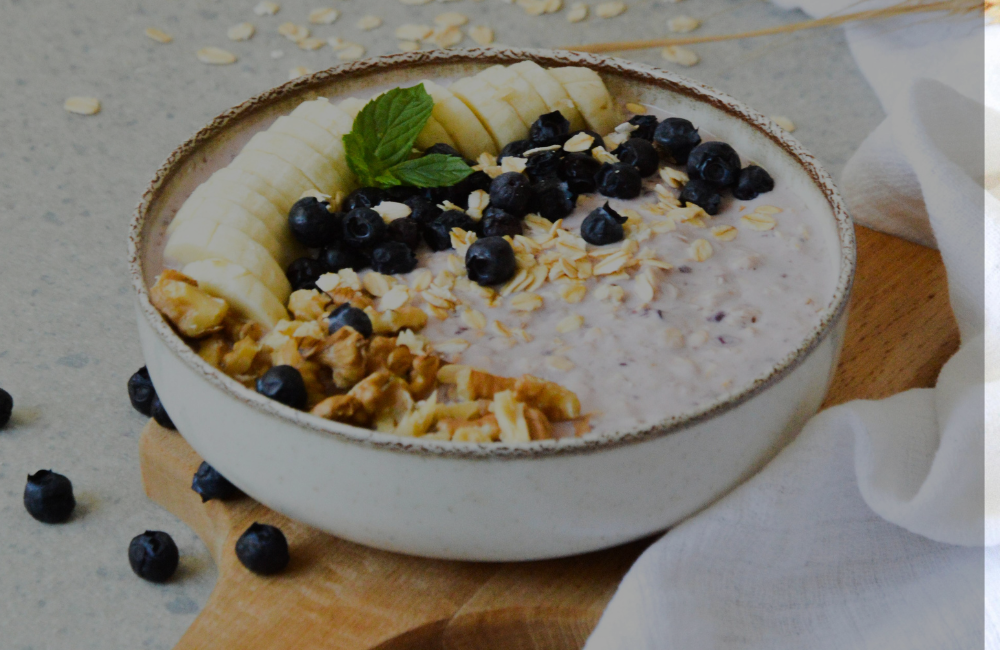
Oats are a perfect source of porridge, both fiber and protein. About 13g of protein is found in 100g of oats. By adding almonds, walnuts, chia seeds, and flaxseeds, the nutrition for breakfast is further enhanced. It provides breakfast, long-lasting energy, and is also helpful in weight management.
3- Quinoa Pulao-
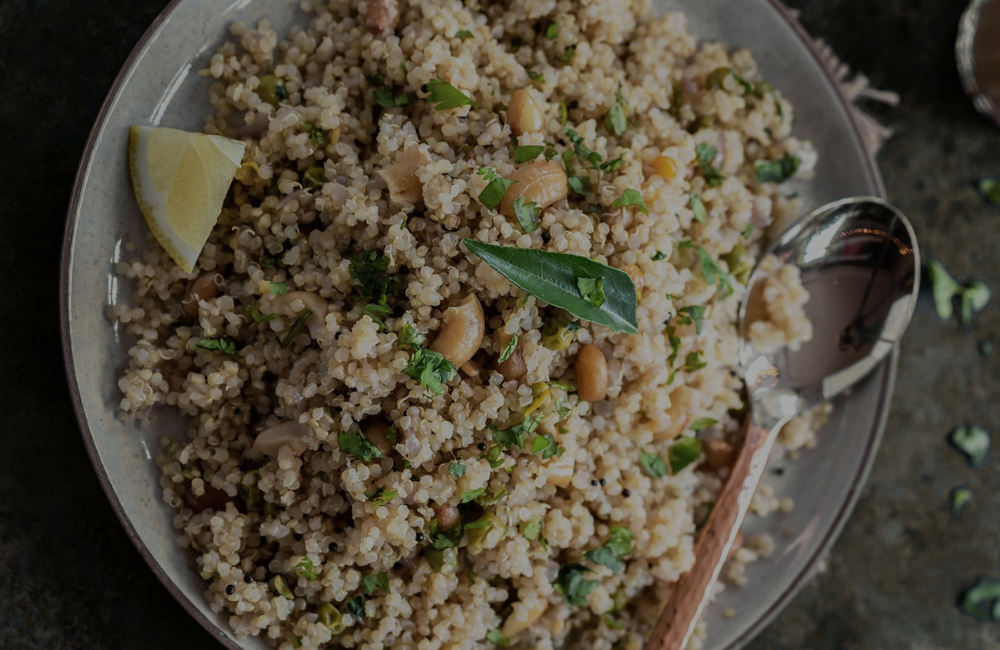
Quinoa is a complete protein, which contains all the essential amino acids. 100g of cooked quinoa provides about 4g of protein. Quinoa Pulao with vegetables is rich not only in protein but also in fiber and minerals. It’s a healthy high-protein vegan alternative to the traditional semolina upma.
4. Soy milk, peanut butter, and banana-

Soy milk contains 3g of protein per 100ml, and peanut butter contains 25g of protein per 100g. A smoothie made by mixing peanut butter and banana in soy milk. In addition to being delicious, it is also rich in high protein and provides instant energy.
These options make breakfast not only delicious but also provide energy and protein for the whole day.
High-Protein Vegan Meals: High-Protein for Lunch-
Lunch, under high-protein vegan meals, is considered to be the most important meal of the day as it protects us from afternoon fatigue and also maintains energy till evening. Whether professionals, students, or housewives, if lunch is nutritious and balanced, all these people can stay active throughout the day. Vegan meals also have many such delicious and nutritious options, which provide the necessary protein to the body, along with filling the stomach. Below are some easy and healthy lunches, high-protein vegan meals.
1- Rajma and Chana Salad–

Both rajma and chickpea are rich in protein. About 19g of protein is found in 100g of chickpeas, and about 8g of protein is found in kidney beans. A salad made by combining them with tomatoes, cucumbers, onions, lemons, and green leaves is rich in freshness and nutrition.
2. Brown rice, lentils, and vegetables-

Brown rice contains more fiber and minerals. When eaten with lentils and seasonal vegetables, it becomes a complete meal, rich in nutrition. 100g of cooked lentils contains about 9g of protein, which provides energy and satiety to the body in the afternoon.
3- Tofu curry and multigrain bread–

Tofu is made from soy and is the best substitute for protein for vegan meals. 100g of tofu contains about 8g of protein. Eating tofu curry made in spicy gravy with multigrain roti (wheat, jowar, millet, etc.) balances the meal with protein, fibre, and vitamins.
4. Quinoa casserole–

Quinoa is a complete protein and contains all the essential amino acids. 100g of ripe quinoa contains about 4g of protein. It can be cooked with colourful vegetables and light spices and made in the form of a pulao. It is a lightweight, digestible, and nutritious option.
Therefore, all these dishes not only make lunch tasty but also provide high-protein, energy, and essential nutrients to the body.
High-Protein Vegan Meals: High-Protein for Snacks-
In addition to high-protein vegan meals, it is also necessary to have healthy snacks after lunch and before dinner to maintain energy throughout the day. For this, people always eat junk food or fried snacks, which give extra calories but no nutrition. At Vegan Meals, many snack options are rich in protein, healthy, and delicious.
1- Roasted chickpeas-

Under high-protein vegan meals, roasted chickpeas are a traditional and exquisite high-protein snack. About 100g of roasted chickpeas provides about 19g of protein. It can be made even more delicious by adding spices and lemon. It can also be easily eaten while working or traveling.
2- Peanut butter toast-

In high-protein vegan meals, peanut butter is a good source of both toast and healthy fats. 100g of peanut butter contains about 25g of protein. If it is eaten on whole-grain bread, it is a quick snack to make and fill.
3- Protein shake prepared from soy milk or almond milk and seed powder-

Under high-protein vegan meals, a protein shake is made by adding chia, flax, or sunflower seed powder to soy milk or almond milk. After a workout, this drink is a light, nutritious, and instantly energizing snack.
4- Vegan protein bar-

Nowadays, there are many types of vegan protein bars available in the market. All of these bars are made up of nuts, seeds, and plant-based proteins. They are easy to keep with and prove to be an alternative to sudden hunger.
So, under high-protein vegan meals, all these snacking ideas can help you stay active and protein-rich throughout the day without eating junk food.
High-Protein Vegan Meals: High-Protein for Dinner-
Dinner provides energy to the body throughout the night. It should always be light, nutritious, and easily digestible. Dinner should be light and digestible, but it is also essential to have enough protein. So that the body can get the necessary nutrition for muscle repair and recovery with sleep. Along with this, overeating should also be avoided. In vegan diets, many options are both delicious and nutritious. Below are some healthy, balanced, and tasty dinners, under high-protein vegan meals.
1- Mung bean sprouts stir-fry–
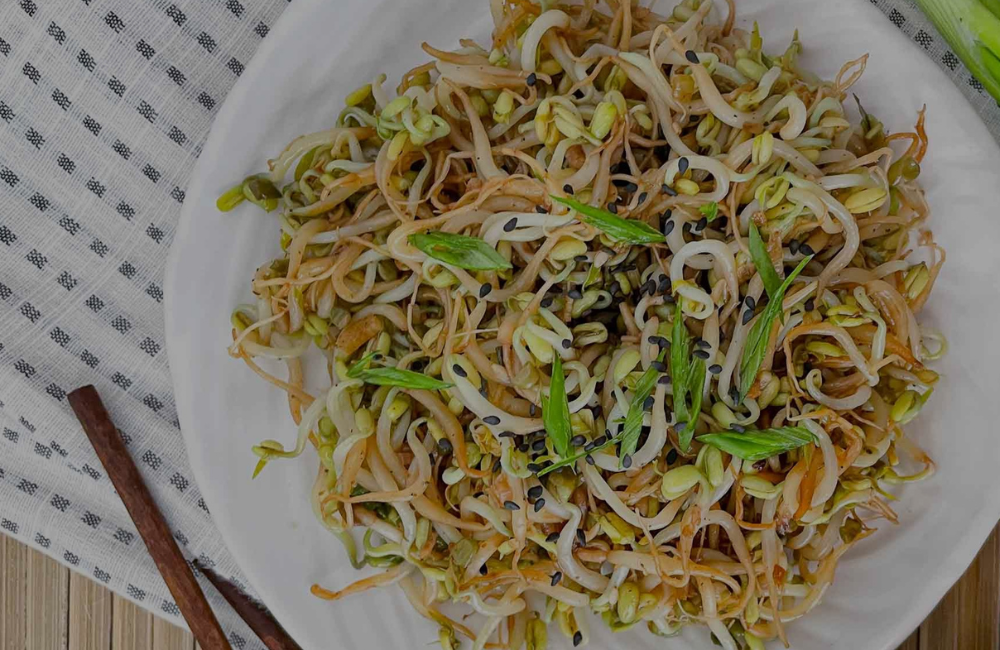
Under high-protein vegan meals, sprouted moong is rich in protein and enzymes. About 7g of protein is found in 100g of sprouted moong. The dish made by stir-frying it with light vegetables and spices is an easy-to-digest and nutritious dinner option.
2- Tempeh curry, jowar, and millet-
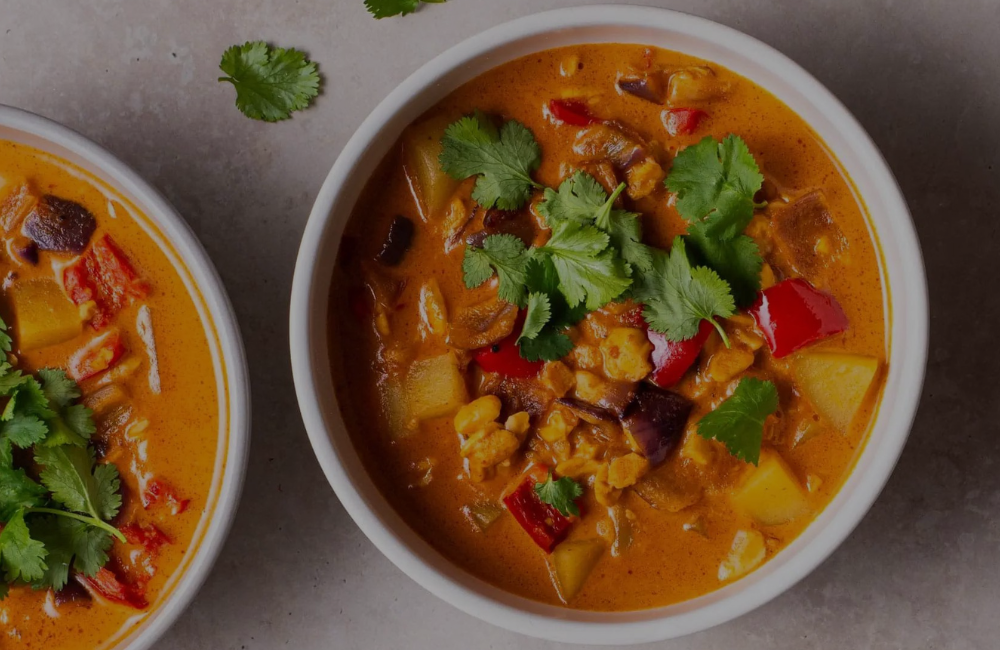
Under high-protein vegan meals, tempeh, one made from soy, is a fermented product, containing about 19g of protein per 100g of tempeh. Eating spicy tempeh curry with jowar or bajra roti provides a good amount of protein, fiber, and minerals. It is a light and healthy option for dinner.
3. Masoor Dal Soup–

Under the high-protein vegan meals, lentils are easy to digest and rich in protein. 100g of lentils contains about 9g of protein. Masoor dal soup, made with vegetables like tomatoes, carrots, and spinach, is a healthy, delicious, nutritious, and light dinner option, especially in the cold season.
4- Tofu Tikka and Salad-
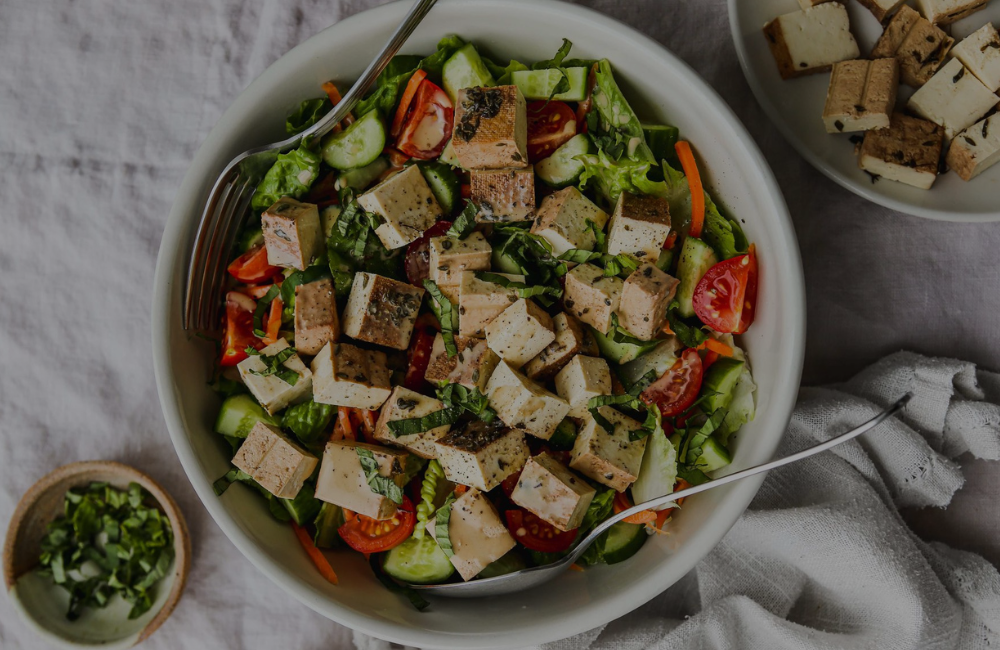
Under high-protein vegan meals, tofu can be marinated in light spices and made like tikka on an oven or griddle. 100g of tofu provides about 8g of protein. When eaten with salads (e.g., cucumber, tomato, lettuce, lemon, etc.), it becomes a healthy, balanced, and high-protein dinner.
Therefore, all these options make dinner light, balanced, and protein-rich. Due to which the body gets both rest and recovery.
High-Protein Vegan Meals: Meal Plan-
Under high-protein vegan meals, it is essential to keep in mind that each meal contains enough protein, carbohydrates, healthy fats, and fiber while creating a balanced meal plan. Below is a one-day high-protein vegan meal plan chart.
Breakfast–
Moong dal chill, tofu filling ( 20g protein), and a glass of soy milk (3–4g protein).
Lunch–
Brown rice, lentils, vegetables, and salads (cucumber, tomato, sprouted mung beans, etc.) (18–20g protein in total).
Evening snack–
Peanut butter toast (10–12g protein) and green tea or lemon water.
Dinner–
Tempeh curry, millet or jowar bread (20g protein) plus salad.
Under the high-protein vegan meals, this meal plan can provide about 65–70g of protein a day and about 1800–2000 calories of energy from it. Its quantity depends on the individual’s need and level of activity.
High-Protein Vegan Meals: Common Mistakes and Precautions-
Under High-Protein Vegan Meals, when adopting a vegan diet, people make some common mistakes, which hurt their health. It is extremely important to avoid them and take a balanced diet.
1- Eating a carb-heavy vegan diet only-
Many people become more dependent on rice, bread, and potatoes. This leads to a lack of protein, and the body does not get the necessary nutrition.
2- Not having a variety of protein sources-
It is not right to rely on only one or two sources, such as lentils or chana. It is essential to eat tofu, tempeh, quinoa, seeds, nuts, and individual pulses in order to get all the necessary amino acids.
3- Lack of adequate water and micronutrients-
Vegan diets are always deficient in vitamin B12, iron, zinc, and omega-3. Adequate water and green leafy vegetables, seeds, and fortified foods should be consumed.
4- Need for supplements-
If the diet does not provide enough B12, iron, or omega-3, then it is very important to take supplements on the advice of a doctor. Those who adopt a vegan diet for a long period should pay attention to this.
By taking these precautions, you can make high-protein vegan meals safe and balanced.
High-Protein Vegan Meals: Conclusion
High-Protein Vegan Meals are not only possible but also extremely beneficial for health. By choosing the right option and inserting the variety, the body can easily get the necessary proteins, vitamins, and minerals. Whether it’s building muscle, controlling weight, or staying full of energy, a vegan diet makes it all possible.
Eating a source of protein, such as lentils, beans, tofu, tempeh, quinoa, nuts, and seeds in the right balance, provides complete nutrition to the body.
The secret to a healthy lifestyle is not just in eating, but in the right choices and consistency. If you include high-protein vegan meals in your diet, then not only is the body strong, but it also feels energetic and balanced from the inside.

